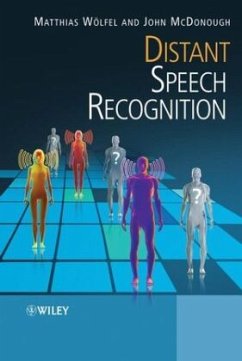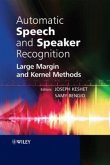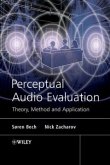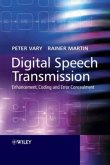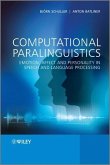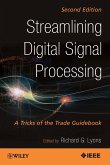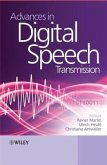In order to make speech recognition the universally preferred mode of interacting with machines, far-field microphones must attain the same level of performance that is currently available with close-talking microphones. Presenting an up-to-date and comprehensive description of both the theoretic abstraction and practical issues inherent in the distant ASR, Distant Speech Recognition covers the entire distant ASR subject in one volume. Here, researchers, developers, advanced students, professors, and engineers will discover techniques developed in other areas of signal processing that mitigate the deleterious effects of noise and reverberation.
A complete overview of distant automatic speech recognition
The performance of conventional Automatic Speech Recognition (ASR) systems degrades dramatically as soon as the microphone is moved away from the mouth of the speaker. This is due to a broad variety of effects such as background noise, overlapping speech from other speakers, and reverberation. While traditional ASR systems underperform for speech captured with far-field sensors, there are a number of novel techniques within the recognition system as well as techniques developed in other areas of signal processing that can mitigate the deleterious effects of noise and reverberation, as well as separating speech from overlapping speakers.
Distant Speech Recognitionpresents a contemporary and comprehensive description of both theoretic abstraction and practical issues inherent in the distant ASR problem.
Key Features:
Covers the entire topic of distant ASR and offers practical solutions to overcome the problems related to it
Provides documentation and sample scripts to enable readers to construct state-of-the-art distant speech recognition systems
Gives relevant background information in acoustics and filter techniques,
Explains the extraction and enhancement of classification relevant speech features
Describes maximum likelihood as well as discriminative parameter estimation, and maximum likelihood normalization techniques
Discusses the use of multi-microphone configurations for speaker tracking and channel combination
Presents several applications of the methods and technologies described in this book
Accompanying website with open source software and tools to construct state-of-the-art distant speech recognition systems
This reference will be an invaluable resource for researchers, developers, engineers and other professionals, as well as advanced students in speech technology, signal processing, acoustics, statistics and artificial intelligence fields.
A complete overview of distant automatic speech recognition
The performance of conventional Automatic Speech Recognition (ASR) systems degrades dramatically as soon as the microphone is moved away from the mouth of the speaker. This is due to a broad variety of effects such as background noise, overlapping speech from other speakers, and reverberation. While traditional ASR systems underperform for speech captured with far-field sensors, there are a number of novel techniques within the recognition system as well as techniques developed in other areas of signal processing that can mitigate the deleterious effects of noise and reverberation, as well as separating speech from overlapping speakers.
Distant Speech Recognitionpresents a contemporary and comprehensive description of both theoretic abstraction and practical issues inherent in the distant ASR problem.
Key Features:
Covers the entire topic of distant ASR and offers practical solutions to overcome the problems related to it
Provides documentation and sample scripts to enable readers to construct state-of-the-art distant speech recognition systems
Gives relevant background information in acoustics and filter techniques,
Explains the extraction and enhancement of classification relevant speech features
Describes maximum likelihood as well as discriminative parameter estimation, and maximum likelihood normalization techniques
Discusses the use of multi-microphone configurations for speaker tracking and channel combination
Presents several applications of the methods and technologies described in this book
Accompanying website with open source software and tools to construct state-of-the-art distant speech recognition systems
This reference will be an invaluable resource for researchers, developers, engineers and other professionals, as well as advanced students in speech technology, signal processing, acoustics, statistics and artificial intelligence fields.

